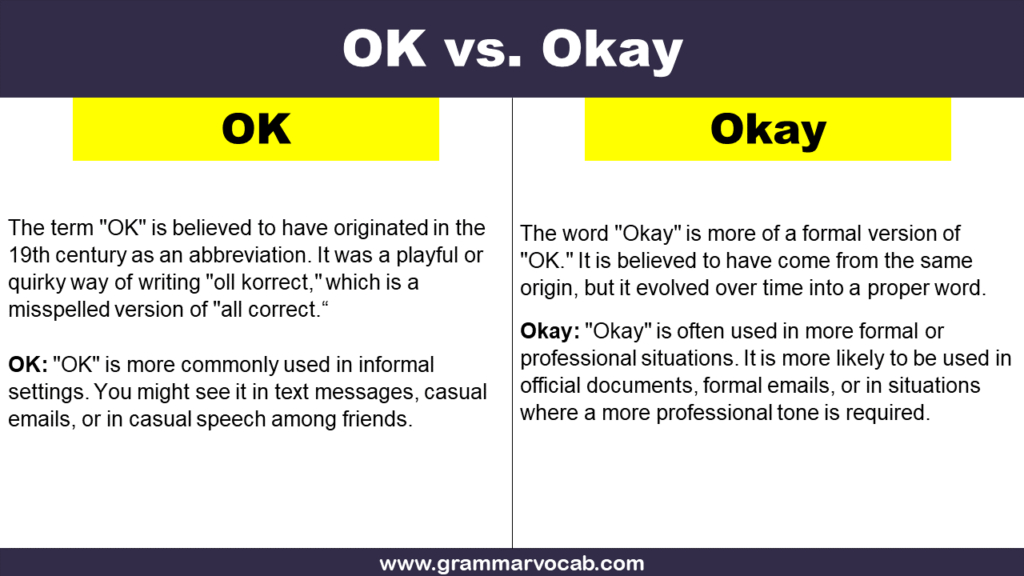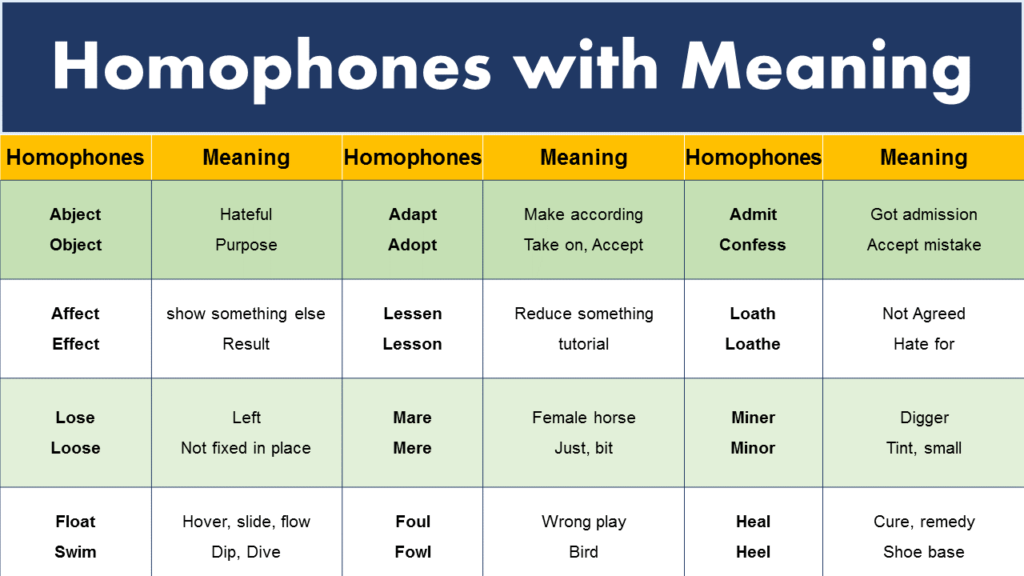In today’s world, we often use the words “OK” and “Okay” when we talk or write. They seem very simple, but did you know there’s a lot to learn about these two little words? Some people think they are the same, while others believe there are small differences. In this article, we’re going to explore where these words came from, how we use them in different ways, and why they are important in our daily communication. Let’s dive into the interesting world of “OK” and “Okay” and find out what makes them unique.
Ok vs. Okay
- OK: The term “OK” is believed to have originated in the 19th century as an abbreviation. It was a playful or quirky way of writing “oll korrect,” which is a misspelled version of “all correct.”
- Okay: The word “Okay” is more of a formal version of “OK.” It is believed to have come from the same origin, but it evolved over time into a proper word.
Difference Between OK And Okay
- Spelling and Look: The main difference is how they are written. “OK” is just two letters, and “Okay” is spelled with four letters. “Okay” looks more like a standard word.
- Formality: “OK” is often seen as more casual or informal. You might see it more in texts or quick messages. “Okay,” on the other hand, might be used in more formal writing. It looks more like a full word.
- Feeling or Emphasis: Sometimes, “Okay” can give a bit more emphasis. For example, if you say, “Okay, I understand,” it can show you really mean it. But this is a subtle difference and not always true.
- Usage in Sentences: Both “OK” and “Okay” can be used in almost the same ways. They can be an adjective, adverb, noun, or verb. For example:
-
- Adjective: “The plan is OK/Okay.”
- Adverb: “He did OK/Okay in the test.”
- Noun: “She gave her OK/Okay.”
- Verb: “I’ll OK/Okay the project.”
Usage:
- OK: “OK” is more commonly used in informal settings. You might see it in text messages, casual emails, or in casual speech among friends.
- Okay: “Okay” is often used in more formal or professional situations. It is more likely to be used in official documents, formal emails, or in situations where a more professional tone is required.
Variations:
- OK: This version is more versatile in usage. It can be used as an adjective, verb, noun, or adverb. For example, “I am OK” (adjective), “OK the document” (verb), “Give me an OK” (noun), “He did it OK” (adverb).
- Okay: “Okay” is typically used only as an adjective or verb. It’s less common to see it used as a noun or adverb.
Cultural Perception:
- OK: In some cultures, “OK” is seen as a very Americanized term, often associated with the United States.
- Okay: “Okay” seems to be more universally understood and doesn’t have as strong a cultural association.
Conclusion:
Both “OK” and “Okay” are correct and can be used to express agreement, acceptance, or acknowledgment. The main difference lies in their formality and the context in which they are used. “OK” is more informal and versatile, while “Okay” is more formal and emphatic. Understanding these subtle differences can help you choose the right word for the right situation.
Must Try:
Simpler or More Simple
She and I or Her and I
Hooked On or Hooked To



